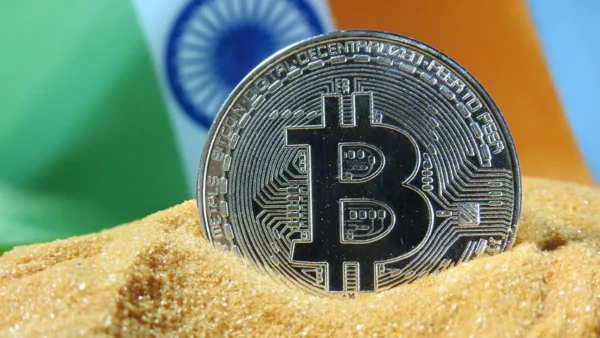Introduction
The Evolution and Future of Indian Crypto currencies have been attracting the world’s attention in the last decade or so and have graduated from what was previously a niche interest to a more powerful financial innovation. India, being one of the world’s biggest economies, has slowly been inching into this space. Indian crypto is a subject of much debate because it finds itself at the crossroads between advancing technologies, problems in regulations, and financial inclusion. This article will track the development of Indian crypto look into its present state review the possibilities offered by it and attempt to identify the challenges that come its way.
India’s government has taken cautious steps, so far with fears on account of security fraud and volatility. The interest in Indian investors heightened as the global boom in crypto trading during 2017 caught momentum although RBI and other regulatory bodies remained wary and had a series of bans and restrictions. Indian crypto market has witnessed dramatic highs and lows, driven by changing governmental policies increasing awareness and a growing digital economy over the years.
Regulatory Landscape and Government Stance
Early Resistance and RBI Ban
In 2018, it put out a circular for not letting the financial institutions again making provision for carrying out the services of those persons who are involved in the crypto currencies. This was done because they were considered to be unregulated hence using services seen to be mainly used for illicit activities such as money laundering, tax evasion, and financing of terrorism. Indian crypto industry stakeholders and enthusiasts has offered a lot of generalized condemnation and said that the government should instead opt to regulate this trade. Finally, almost 2 years of legal battle, the Supreme Court of India ended the RBI ban on trading of crypto currencies in March, 2020. This judgment came as a boost to the tech-savvy crypto enthusiasts who have been waiting to see life begin to return to crypto currency exchanges and traders in Nigeria.
A Ray of Hope
Once the ban was lifted, Indian crypto again garnered much interest. Today, India has emerged as one of the fastest-growing crypto markets around the world, with millions of new entrants to the space. Though the Indian economy is showing steady growth; there is still no clarity about the regulatory framework. At the beginning of 2021, the government presented a proposed bill before it attempted to ban all private cryptocurrencies but itself intends to have a digital rupee, or CBDC,. However, that bill was not presented in the Parliament and only speculation could be done on how things were going to be for India’s regulatory framework around cryptocurrencies.
Opportunities
Financial Inclusion
The most significant realization of crypto currencies in India is possibly going to extend more of financial inclusion. Despite being the fifth-largest economy in the world today, a large part of Indians remains unbanked or under banked. Since crypto’s are decentralized with Smartphone access many traditional financial services can reach those for whom they have no direct banking service available. Bit coin and other forms of crypto currency and their underlying block chain are relatively inexpensive, transparent and relatively safe for remittance transactions, lending and even insurance products. India has a large population and the digital economy is on the rise, thus the use of crypto currencies as an interface in the provision of financial services will become the norm and benefit millions of the population across rural and remote sub-locations.
Boosting Innovation
With such a high rate of adoption of crypto in India, the advancement in the block chain technology will follow along with AI and fetch. It has decentralized ledger technology and is more often associated with Crypto currencies but it can be applied to almost any industry including supply chain management, healthcare logistics or delivery service or even government services. For an example, look at the Indian block chain scalability project, Polygon- people have taken to it globally because of cheaper and faster transactions within the Ethereum network.
Economic Growth
They can also be the catalyst for further economic growth as new employment and business opportunities will be generated. India already has the biggest population for tech-savvy people in the world, with millions of software developers and engineers. Blockchain startups and crypto-related businesses will provide high-scale employment in software development, cyber security, legal consultancy, or financial services.
Increasing foreign investment in Indian crypto exchanges and new startups has been going up. Growth prospects in India’s nascent but promising crypto world do not go unnoticed by venture capitalists and institutional investors pumping money that could accelerate long term growth with more innovation.
Challenges Facing Indian Crypto
Regulatory ambiguity will continue to remain the biggest hurdle for the Indian crypto sector. The government’s confusion, even after the 2020 Supreme Court ruling that has partially offered some comfort, will keep investors and entrepreneurs on tenterhooks. There needs to be a crystal-clear and well-balanced framework of regulation to instill trust and safeguard consumers, spur innovation at the same time as allaying security and financial stability concerns of the government.
Furthermore, there isn’t a formalized legal framework that puts investors to such risks of fraud hacking and even market manipulation. Already, several exchange hacking incidents or those who mismanaged user funds have led to losses in some of the investors’ investments thus making even more sense the implementation of strong regulations. Regulatory Uncertainty and Lack of Clarity.
Concerns over Security
The three major allegations against crypto currencies for being a medium for payment include that one: It is possible to engage in money laundering, second: to finance terrorism, and third: to evade taxes. Considering the fact that crypto currencies are comparatively anonymous to a certain extent it has always been a favorite with cyber fraudsters for laundering money through dark web. The Indian government does not look too favorably at such unregulated entities. The Indian government’s strategy is to eliminate all forms of such unlawful transactions. However, to achieve the same, over regulation become cumbersome for growth and development and the crypto businesses may be compelled to move shifted towards more favorable regions.
Investor Protection
It is relatively clear that the price of the digital currencies is unpredictable and volatile. For this reason, it is hugely volatile; its prices can skyrocket or plunge in the shortest time possible as illustrated in the figure below. Most people are motivated by high returns knowing very little about the risks and end up losing a lot of money. A greater percentage of Indians who are investing in crypto currency are doing it for the first time because they are financially illiterate. This kind of ignorance, and as we know, with crypto being super risky, potentially poses a threat to the large-scale loss of investments; thus, creating awareness to protect investors is more important.
The Future of Indian Crypto
Moving Toward Regulation
For the Indian crypto market to mature and prosper, a careful balance of regulation by the government is required. A forward-looking regulatory framework that looks after the security aspects but leaves enough room for innovation will be the ingredient for sustainable long-term success of cryptocurrencies in India. Instead, the government should focus on establishing a sandbox for regulatory purposes, under which controlled experimentation with blockchain technologies and digital assets can be conducted. This will encourage innovation while still enabling the regulators to comprehend how they best ought to address these cryptocurrencies’ issues.
Potential Integration
Probably at the point when India introduces a CBDC, it may find ways of marrying its own digital rupee with decentralized cryptocurrencies. Although they belong in different spheres, they may coexist as an ecosystem where cryptocurrencies provide unique services like Deify while the digital rupee will help with more mainstream usage.
International Collaboration
As the cryptocurrencies and blockchain technologies are borderless, hence the approach of India regarding regulation and innovation is going to be based on international standards and collaborations. Most of the countries have worked out their frameworks of regulation for cryptocurrencies, and similar platforms should be followed by India for its crypto industry to maintain their competitiveness, too.
Consumer Awareness
The final point is that if cryptocurrencies are to be adopted in an appreciable manner, it is imperative that there is a shared understanding of the associated risk and benefit which this new asset class presents. Education about digital assets, investment risk, and security practices in financial literacy may better position one to make informed choices regarding investments.
Conclusion
Indian crypto is poised at such an exciting crossroads. On one hand, the growth and innovation possibilities are limitless but on the other hand the breadth and diversity of challenges in the industry especially with regards to regulation, security, and investor protection are largely many. A well-crafted balanced regulatory framework, developed by the Indian government will unlock a whole treasure trove of block chain potential for crypto currencies great drivers of financial inclusion, innovation, and growth for the country’s economy. Indian crypto is far from over but with the right approach it may emerge as the future global leader in shaping the digital economy and accordingly one of the most dynamic players shaping the future of finance over the course of decades.





